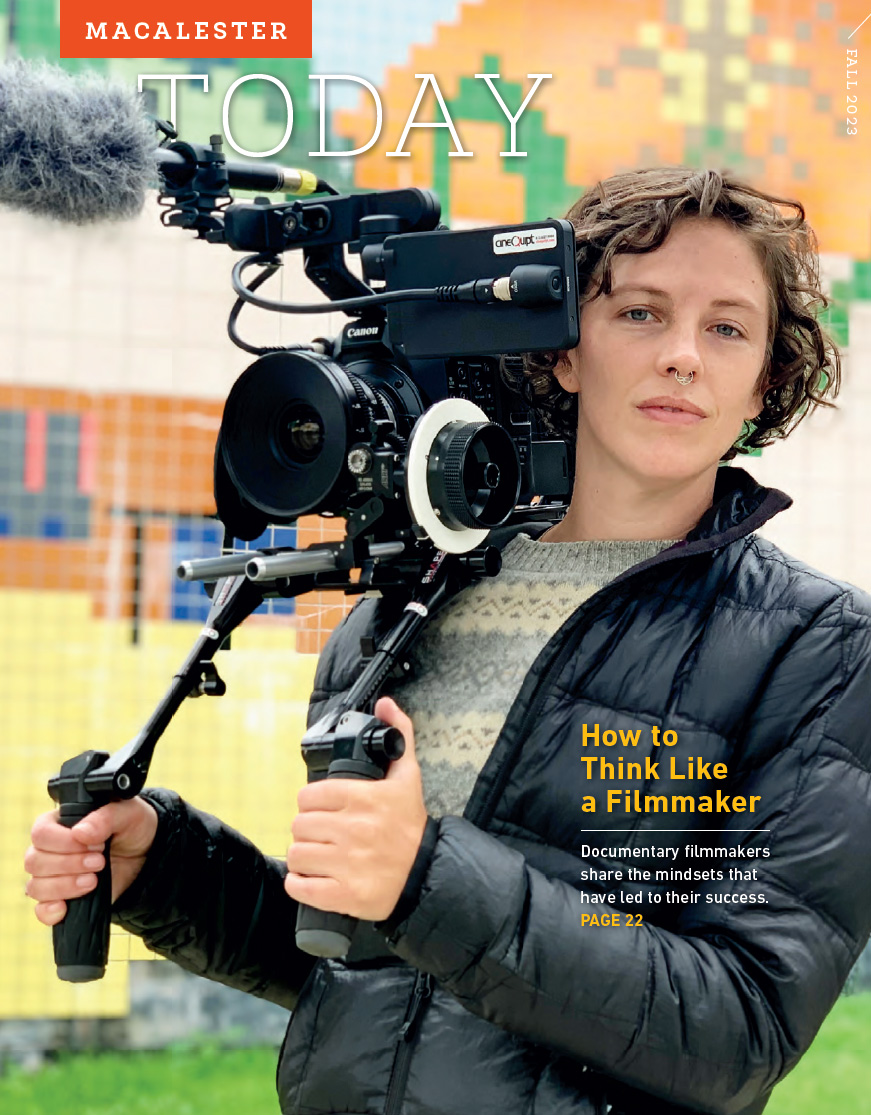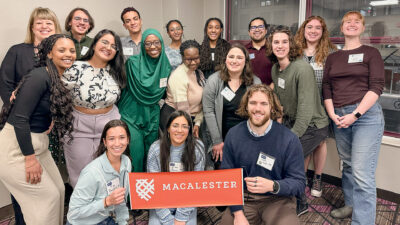
By Devavani Chatterjea, Nancy Bostrom, and Bethany Miller
Several research studies link a sense of community in educational spaces to improved learning and student success. In September 2021, as we returned to in-person learning and teaching after a year of virtual engagement, we launched the Classroom Community and Connectedness Project (CC&C) at Macalester. CC&C is a facilitated reflection and interactive brainstorm exercise designed to improve experiences of community and connectedness in courses, while itself serving as a community-building activity.
In the project’s first year, twenty faculty members opted in to share their classrooms with us for one class period early in the term. Carrying white boards, bags of Post-its, pens, and markers, we arrived in Macalester classrooms and asked students (the instructor was not present) for their individual responses to four questions:
- What is working well to support community and connectedness in this course?
- What are barriers to community and connectedness in this course?
- What can students do to improve community and connectedness in this course?
- What can the instructor do to improve community and connectedness in this course?
Students wrote their anonymous responses on color-coded sticky notes and added them to poster boards dedicated to each question. We then divided the class into four teams and charged them with “analysis”—to parse the collected ideas into themes that emerged from the class as a whole, write the themes on the poster boards, and present them to the class.
Finally, students went on a “gallery walk” to review themes posted on the boards and added priority stickers to the ones most significant to them personally. We then asked students to reflect on their own roles in building community, thanked them for their time and work, and followed up with each faculty member within a week of the visit for a short debrief to share the themes and priorities that emerged from their class.
Findings
Our immediate priority was to provide course-based feedback to individual faculty in participating courses. Now we are analyzing aggregated responses from the over 400 student participants to uncover meta-themes across courses.
While the questions did not explicitly ask about learning design and activities, students often made that connection themselves. For example, we identified four overarching themes that support community and connectedness:
- Interpersonal relationships. Practices like learning students’ names, well-being check-ins, grounding moments, encouraging questions, and welcoming all kinds of ideas help to foster a sense of social and academic belonging.
-
Collaboration. Students want authentic collaboration like classroom discussions, peer learning, group projects, and small groups that facilitate subject-matter conversations and social connections.
-
Instructional design. Case studies or connecting the curriculum to personal experiences or current events increases student connections and community in the course. Additionally, students enjoy connecting and exchanging ideas via electronic tools such as Moodle or Slack channels.
-
Use of physical space. Students prefer seating arrangements and work spaces that promote interaction and collaboration.
In fall 2021, over 90 percent of faculty participants said they found their specific CC&C feedback helpful and were able to implement positive changes for the rest of the semester; in fall 2022, that number rose to 100 percent.
In fall 2021, over 90 percent of students agreed it is important to be intentional about building community in courses at Macalester and nearly 70 percent felt that this particular activity and the ideas it generated contributed to a stronger sense of community. More than 75 percent of students—and an even higher percentage of students who identify as first-generation students—agreed that the activity would be valuable in additional courses on campus.
Next steps
In collaboration with the Jan Serie Center for Scholarship and Teaching, we continue to make CC&C available to faculty who opt in. To make the process sustainable, faculty who request a session for their class are trained to co-facilitate a colleague’s class along with a partner from Institutional Research & Assessment.
Faculty-staff collaboration is key for the success of this project and remains the centerpiece of ongoing analysis and capacity building for this work on campus. Student feedback informed pedagogy in individual courses, and we are currently working on aggregating the student feedback from across courses, to create a toolkit of best practices for building community in classrooms at Macalester.
The lessons emerging from the project reaffirm the value of evidence-based, high-impact practices of team-based and active learning methods where connections between students are centered in instructional design (see sidebar). The desire for authentic human connection and collaboration transcends the classroom and is at the heart of our thriving as social organisms.
For More Information:
Dr. Devavani Chatterjea is a professor of biology; Nancy Bostrom, M.Ed., is associate director of assessment; and Dr. Bethany Miller is director of Institutional Research & Assessment. A version of this article appeared as a Data-Based Decision Tip in Inside Higher Education’s Student Success newsletter in April 2023.
November 1 2023
Back to top





